Name Tracey Moffatt Role Artist | ||
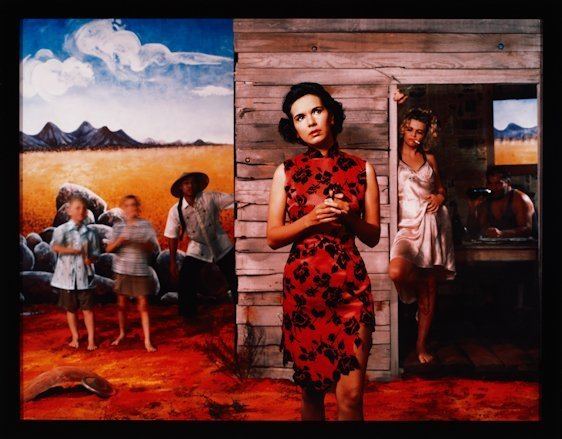 | ||
Artwork Job Hunt, Useless, Something , Doll Birth Nominations Australian Film Institute Award for Best Experimental Film Movies Bedevil, Night Cries ‑ A Rural Tragedy, Nice Coloured Girls, Heaven, A Change of Face Similar People Bill Henson, Anne Zahalka, Gordon Bennett, Fiona Margaret Hall, Max Dupain | ||
Tracey moffatt compilation celebrating wmm s 40th anniversary
Tracey Moffatt AO (born 12 November 1960) is an Australian artist who primarily uses photography and video.
Contents
- Tracey moffatt compilation celebrating wmm s 40th anniversary
- Australia Tracey Moffatt My Horizon Venice Biennale 2017
- Early works
- 1990s
- 2000s
- Film and video work
- Night Cries A Rural Tragedy 1989
- Bedevil 1993
- Heaven 1997
- Lip 1999
- Artist 2000
- Revolution 2008
- Select Filmography
- References

Born in Brisbane in 1960, she holds a degree in visual communications from the Queensland College of Art, graduating in 1982.

Though she is best known for her photographic works, Moffatt has created numerous films, documentaries and videos. Her work often focuses on Australian Aboriginal people and the way they are understood in cultural and social terms.
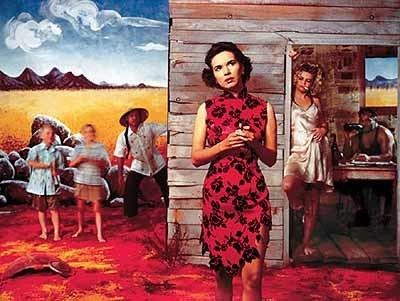
Her works are held in the collections of the Tate, Museum of Contemporary Art, Los Angeles, National Gallery of Australia, Art Gallery of South Australia and Art Gallery of New South Wales.

Australia - Tracey Moffatt - My Horizon - Venice Biennale 2017
Early works
Moffatt's first work that came to public attention was the 1989 Something more series of photographic works. Something more has been described as "iconic".
1990s
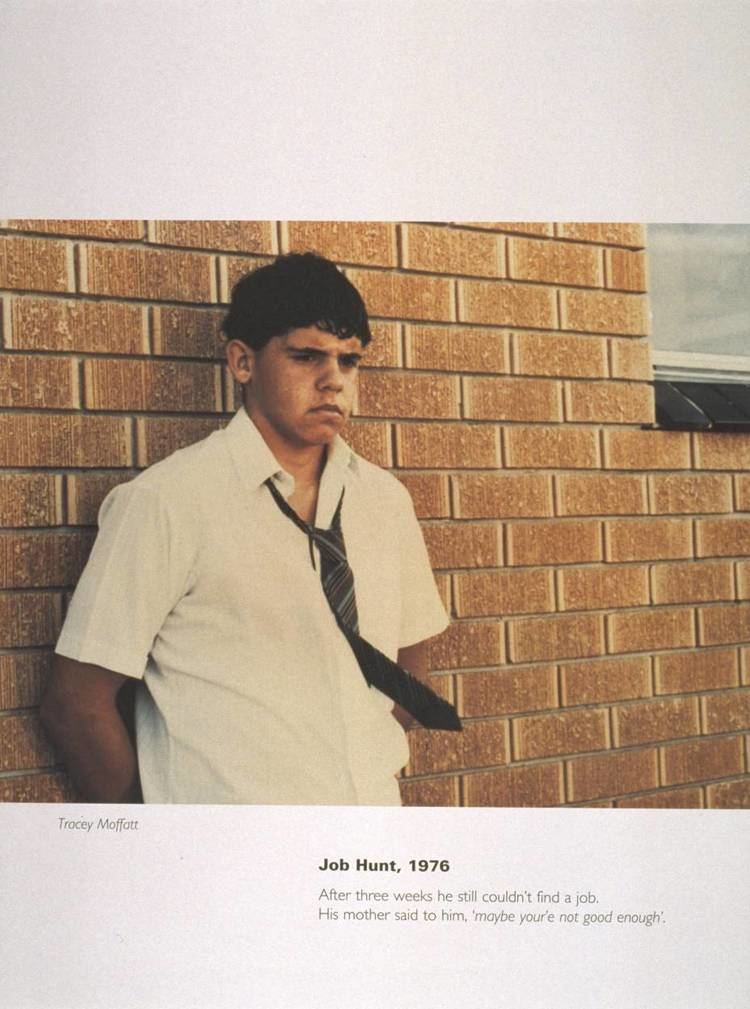
Moffatt's photographic series of works such as Pet Thang (1991) and Laudanum (1998) returned to the themes of Something More exploring mixed and sometimes obscure references to issues of sexuality, history, representation and race. Other series of images, notably Scarred for Life (1994) and Scarred for Life II (1999) again tackled these themes but which referenced the photojournalism and photo essays of Life magazine accompanied by captions. While the words are compelling, they don’t explain the images, indeed they tend to add to their enigmatic nature as though more information is a further dead end.
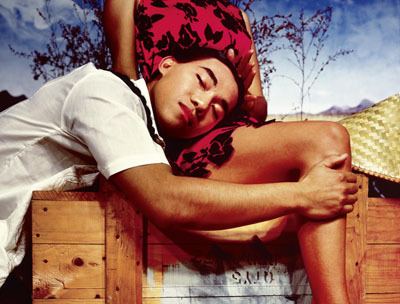
As her work progressed over the next decade, Moffatt began to explore narratives in more gothic settings. In Up in the Sky (1998) the artist's work again used a sequential narrative but instead of using fantasy settings, a story concerning Australia's "stolen generation" – Indigenous Australian children who were taken from their families and forcibly relocated under Government policy – was enacted and performed on location in Queensland's outback. Like Something More, Up in the sky employs the theme of race and violence, displaying a loose narrative set against the backdrop of a remote town, ‘a place of ruin’ and devastation populated by misfits and minor characters. It is one of Moffatt’s larger series of photographs and takes its visual ideas from Italian modernist cinema Accattone (1961) by Pier Paolo Pasolini. The story relies on a triangular mixed-race relationship. Of this work Moffatt stated: 'My work is full of emotion and drama, you can get to that drama by using a narrative, and my narratives are usually very simple, but I twist it … there is a storyline, but … there isn’t a traditional beginning, middle and end.'
2000s
In 2000, Moffatt's work was amongst those by eight individual or collaborative groups of Indigenous Australian artists included in a major exhibition of Australian Indigenous art held in the prestigious Nicholas Hall at the Hermitage Museum in Russia. The exhibition received a positive reception from Russian critics, one of whom wrote:
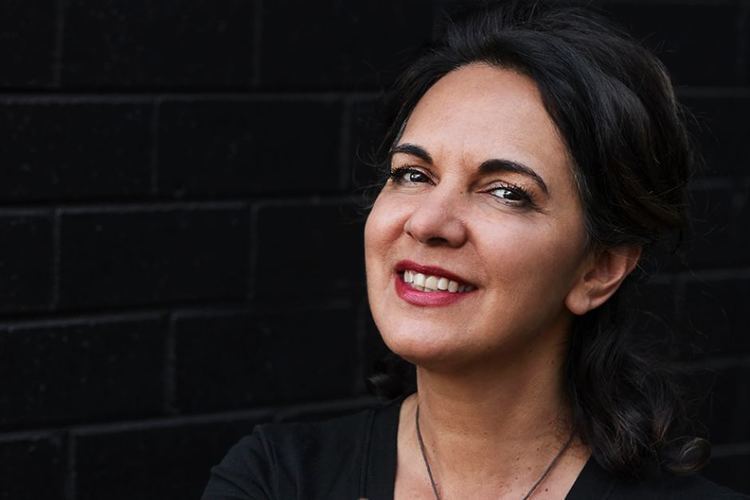
This is an exhibition of contemporary art, not in the sense that it was done recently, but in that it is cased in the mentality, technology and philosophy of radical art of the most recent times. No one, other than the Aborigines of Australia, has succeeded in exhibiting such art at the Hermitage.
Moffatt's work since 2000 has retreated from specific locales and subject matter and become more explicitly concerned with fame and celebrity. Her series Fourth(2001) used images of sportspeople from the 2000 Summer Olympic Games coming fourth in their various competitions. Seeking to underline their outsider status, the images are treated so only the ignoble fourth place holder is highlighted.
2003 saw Moffatt named by Australian Art Collector magazine as one of the country's 50 most collectible artists.
Adventure Series (2004) is Moffatt's most unabashed fantasy series using painted backdrops, costumes and models (including the artist herself) to enact a soap opera like drama of doctors, nurses and pilots in a tropical setting. Under The Sign of Scorpio (2005) is a series 40 images in which the artist takes on the persona of famous women born – like the artist – under the zodiac sign of Scorpio. The series reiterates the artist's ongoing interests in celebrity, alternate personas and constructed realities. Moffatt's 2007 series Portraits explores the idea of 'celebrity' among people in her immediate social circle – family members, fellow artists, her dealer – through 'glamorised' renderings of their faces using computer technology, repetitive framing and bright colours.
Film and video work
Moffatt's work in film and video has included short films, experimental video and a feature film. The short films rely on the stylistic genre features of experimental cinema – usually including non-realist narrative scenarios often shot on sound stages echoing her work in still photography. Early works such as Nice Coloured Girls and Night Cries also use sound mixes that reinforce the 'fakeness' of the settings and use well-worn experimental cinema devices such as audio field recordings and low tones to provide atmosphere. Her short video works such as Artist (2000) use the cut up methodology of taking images from pre-existing sources and re-editing them into ironic commentaries on the material – Artist for example providing a commentary on the cliched role of the artist in Hollywood cinema, and her Doomed (2007) – made in collaboration with the artist Gary Hillberg – a collection of scenes of destruction from disaster movies. Her feature film Bedevil is a trio of narratives themed around spirits and hauntings.
Night Cries: A Rural Tragedy (1989)
Primarily concerned with a series of almost static vignettes, Night Cries reiterates many of Moffatt's visual motifs from her still photography – sets, non-acting, an evocative use of sound and music. In Night Cries Moffatt's attempts to draw ironic or romantic connotations in juxtaposition to the images and narratives, such as her use of Jimmy Little. Moffatt also makes explicit references to Australian art history, drawing parallels between Indigenous history and the recording the landscape by non-Indigenous artists by quoting artists such as Frederick McCubbin's The Pioneer. This film was selected for official competition at the Cannes Film Festival in 1990.
Additionally, In the film night cries, Tracey reminds and displays history of the colonial past of Aboriginal people. This film makes connections between aboriginal people and their colonizers by touching on systems that were used by colonizers to harm and put Aboriginals at a disadvantage. In the film, there is a clear tension and mixed feelings between the characters, one being the white woman and the other an aboriginal woman who play adoptive mother and daughter
This film is powerful as Tracey uses different aspects of colonization of Aboriginal people to illustrate the damage and hurtful events that took place. This film is used as a voice to show and remind viewers of the past colonial history.
Bedevil (1993)
Shown at the 1993 Cannes Film Festival, Bedevil is composed of three self-contained narratives with recurring visual motifs. In the first story Mister Chuck Moffatt uses the character of an American soldier, in the second part Choo Choo Choo Choo railway tracks connect a series of events and in the final part Lovin' the Spin I'm in a landlord who evicts a family from a house. The images were partly inspired by memories from her early life.
Heaven (1997)
In Moffatt's film, Heaven, footage of men getting changed in a car park near a beach is collected together, the film maker taking the position of a voyeur.
Lip (1999)
In Lip, Moffatt collates clips of black servants in Hollywood movies talking back to their 'bosses', attempting to expose the attitudes to race often found in mainstream cinema. Also, this film is written on two women, one white and one black. In this film, the story line shows the conflict between the white woman and the black woman who is her maid. It shows racial tensions.
Artist (2000)
Moffatt's Artist is a collection of clips from movies and television programs that depict artists at work, at play and in the act of creation. By showing the particular bias of television and cinema to what the role of an artist apparently means to modern society, the film reflects the sometimes uninformed, sometimes humorous view of society towards artists today.
Revolution (2008)
Shown at Australian art gallery in New South Wales. Currently exhibited at ARoS museum in Aarhus, Denmark.
